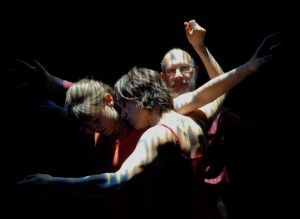Bees, dance, playgrounds and children’s books came together unexpectedly in Toronto last week, along with synchrony, the idea of simultaneous occurrence or motion.
The children’s book was not so much the book as its author JonArno Lawson, whom I met at the Governor-General’s Literary Awards in December. His and illustrator Sydney Smith’s winning book was “Sidewalk Flowers,” which I recommend highly for children and adults alike.
I was delighted that JonArno was free one night while I was in Toronto, as he is a most engaging dinner companion. At one point he told me about a remarkable bit of playground research he’d uncovered, conducted by a student of the American anthropologist and cross-cultural researcher Edward T. Hall. JonArno subsequently sent me a few pages from Hall’s 1983 Book “The Dance of Life,” that described the study.
As Hall wrote, “He began to notice one very active little girl who seemed to stand out from the rest. She was all over the place. My student noticed that whenever she was near a cluster of children the members of that group were in sync not only with each other but with her. Many viewings later, he realized that this girl, with her skipping and dancing and twirling, was actually orchestrating movements of the entire playground!”
Hall went on to describe how the pattern of movement was like the beat of music, with the playground’s children dancing to its silent rhythm. There was no music, however. Rather, the kids were tapping into some subconscious rhythm of play they perceived in a non-audible way.
I immediately thought of bees, and the transcendent spirit of the hive by which the colony collective seems to skip and dance and twirl within the hive much like Hall’s children on the playground.
There is a rhythm to each colony, a beat of activity set by a few individual bees. All might be quiet in the hive until a scout forager returns, dancing vigorously to inform her nestmates of the distance and direction to a field of nectar or pollen-yielding flowers. Potential foragers follow the dance and then fly out themselves, returning with nectar or pollen or both, and performing their own dances that excite other workers.
It all begins with that first scout setting the beat, but soon the pace of the hive has escalated, with some workers accepting and processing the incoming nectar, some packing pollen into cells, and still others following the now-numerous dances and then flying out to forage.
The colony appears in simultaneous motion, a synchronous blending of tasks that creates a palpable rhythm, each bee responding to the beat with different tasks while staying true to the inflections of the collective.
JonArno also suggested that perhaps human dancers resemble bees in our capacity to pace dance to a subtle rhythm-setter. We’ve all been at parties where we might be dancing fluidly among many partners, but there’s usually someone who is influencing the entire dance floor’s pace without being an obvious leader.
I experienced this intersection between bee and human dance most intensely when I was part of two dance projects with Vancouver’s LINK Dance Foundation. I’d never performed on stage with dancers before, but what struck me as most profound was how aware we were of each other without any direct look or other signals. Rather, each segment from each dance had its rhythm subtly conducted by a different performer’s individual beat, with understated leadership shifting between dancers as the piece progressed.
Whether we are well tuned to the playground’s beat or the synchronicity of dance, the pace of human life is remarkably influenced by subtle cues beneath our conscious awareness.
Hall wrote about our perception of that subliminal beat: “I have come to the conclusion that the human species lives in a sea of rhythm, ineffable to some, but quite tangible to others. This explains why some composers really do seem to be able to tap into that sea and express for the people the rhythms that are felt but not yet expressed as music. Poets do this too . . .”
As do bees, themselves composers and poets of their own colony’s cadence, another reminder of the remarkable lessons to be gleaned by those who listen to the rhythm of the hive.
———————————————————-
I’d love to hear from you:
